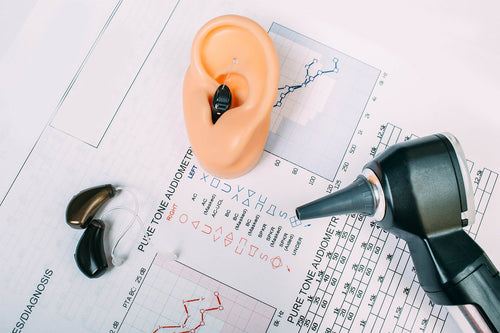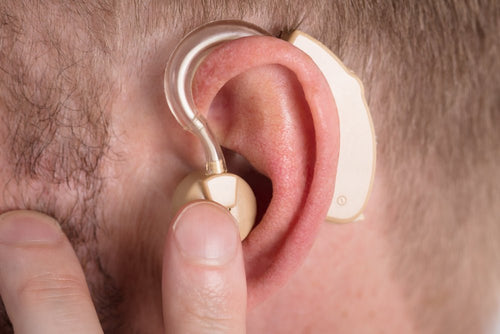Do you often find yourself asking others to repeat themselves? Do you have to crank up the volume of the radio or TV? Or maybe you have trouble understanding people in large crowds. These scenarios, along with many others, are common signs of hearing loss. It is important to get your hearing tested as soon as you begin to develop hearing loss symptoms.
Unlike other hearing tests, tympanometry is not used to test hearing sensitivity. Rather, it is used to detect problems with the function of the middle ear. This specific type of test is great for figuring out if you are a candidate for hearing aids and is often ordered in conjunction with a series of other hearing tests. In this article, we explain everything you need to know about tympanometry.
What is Tympanometry Testing?

Hearing care professionals use tympanometry to check the condition of the middle ear, eardrum, and conduction bones. The function of these parts of the ear are examined through an acoustic device, creating variations of air pressure in the ear canal. It is important to note that this test is not used to evaluate hearing sensitivity and should only be used for audiometric evaluation. Like other hearing tests, Tympanometry is typically simple and painless unless the eardrum or middle ear is severely inflamed at the time of testing.
How Does Tympanometry Testing Work?

After an otoscopy - an examination of the ear with an otoscope - is done to make sure the path to the eardrum is clear, your hearing care professional will insert a tympanometer probe in your ear canal. The tympanometer is an acoustic measure that includes a microphone inside. It will cause the air pressure in your ear canal to change while a low pitched tone is played. This feeling is often compared to pressure changes, such as when you are in a car going through the mountains or on an airplane that is taking off. As the air pressure changes, your eardrum’s movement will be measured with the tympanometer and the results will later be recorded on a tympanogram. A tone of 226 Hz is the most common frequency to be played in the ear canal. However, other tones can be used in more uncommon scenarios. In infants (usually under 4 months old), a 1000 Hz frequency is played for more accurate results.
What do the results from a Tympanometry Test Mean?

As previously mentioned, the results from a tympanometry test are recorded on a tympanogram. A tympanogram is a graph that represents how the eardrum moves in response to the change in air pressure in the ear canal. It is common for middle ear problems to cause stiffening, leading to the sound played in the ear canal to bounce back. Furthermore, tympanometry can be helpful in finding ‘otitis media’ - the presence of fluid build up in the middle ear cavity. Thus, the results from a tympanometry test are helpful for finding functional issues involving the middle ear. Based on the Tympanogram, your hearing care professional will be able to adequately diagnose your hearing problem as well as refer you the proper treatment for your hearing situation. Note that the results from this test should be compared to a pure tone test for the most accurate diagnosis.
Conclusion
Tympanometry is an acoustic test great for assessing the function of the middle ear and eardrum but should not be used for solely hearing sensitivity testing. From your results, a hearing care professional will be able to give you a proper diagnosis and treatment plan that will better your hearing. If you are experiencing hearing loss symptoms, visit your general physician or an audiologist and get your hearing tested as soon as possible. If you are told that you are a candidate for hearing aids, be sure to check out our quality and affordable hearing products here at Audien Hearing!
Thank you for reading this article,
Kathleen Williams
Senior Editor, Audien Hearing













